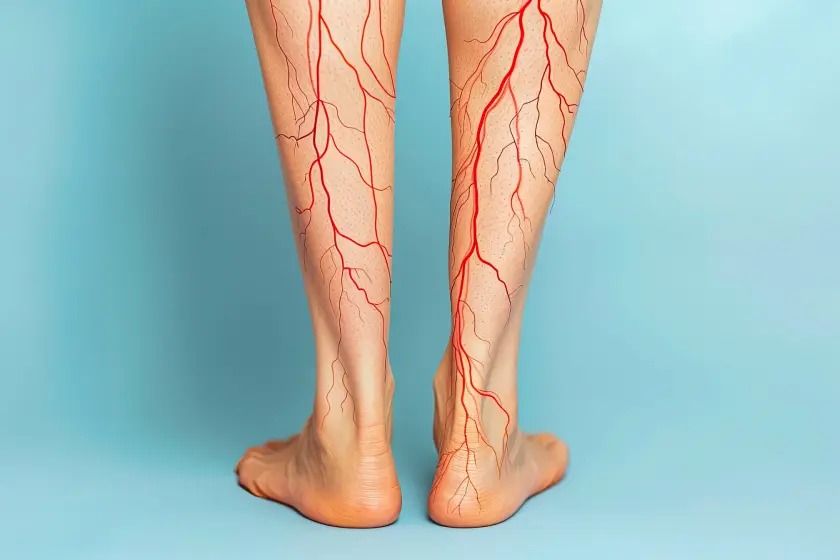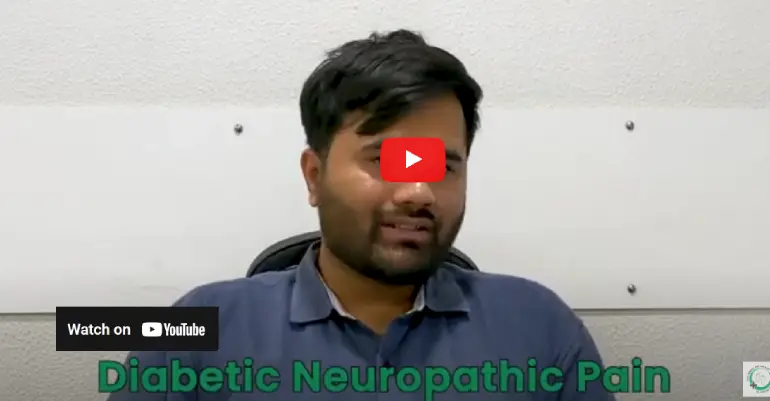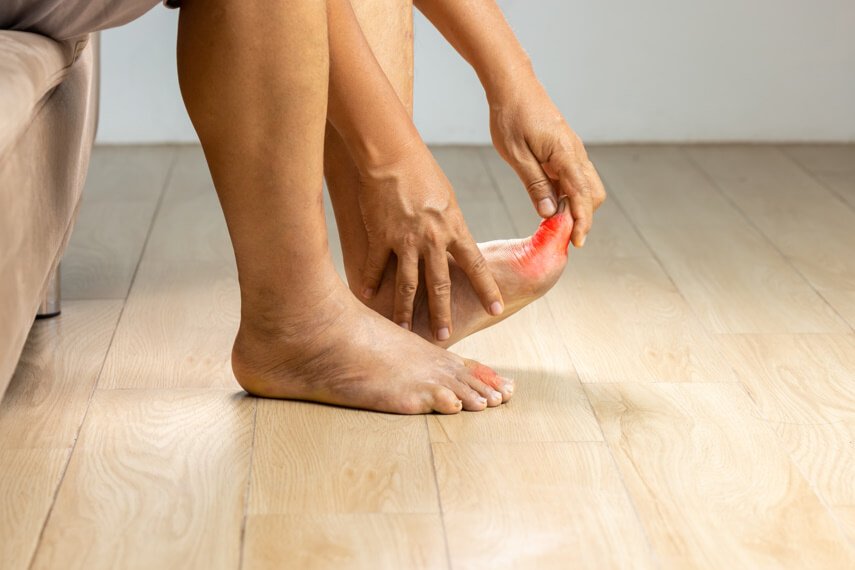Comprehensive Guide to Neurosensory Examination for Diabetic Neuropathy
Neurosensory examination plays a vital role in the early detection and effective management of diabetic neuropathy, a common but frequently underdiagnosed complication of diabetes mellitus. Affecting nearly half of individuals with long-standing diabetes, diabetic neuropathy can lead to devastating consequences - foot ulcers, infections, gangrene, and ultimately lower limb amputations, if not identified and managed in time.
A thorough neurological assessment enables clinicians to evaluate the integrity of the peripheral nervous system, particularly the sensory pathways affected by chronic hyperglycemia. This assessment includes a combination of clinical observations, bedside evaluations, and instrumental testing to identify abnormalities in touch, temperature, pain, and vibration perception.
The purpose of neurological assessment in diabetic patients is not just to diagnose neuropathy but to stage its severity, monitor its progression, and guide treatment decisions. By incorporating multiple neurosensory testing levels, ranging from simple tools like monofilaments and tuning forks to more advanced modalities such as nerve conduction studies and quantitative sensory testing, clinicians can detect even subtle sensory deficits.
Conducting a sensory examination is crucial not only for diagnosis but also for preventive care. Early sensory testing allows for timely interventions like patient education, offloading techniques, and foot care strategies, all aimed at reducing the risk of ulceration and amputation.
In summary, a structured, evidence-based sensory testing approach enhances diagnostic accuracy and patient outcomes. By emphasising neurosensory examination as a routine part of diabetes care, clinicians can move toward a more proactive, prevention-focused model of diabetic foot management.
Types of Diabetic Neuropathy
Diabetic neuropathy encompasses several types of nerve damage caused by prolonged high blood sugar levels. These include:
- Peripheral neuropathy: The most common form, affecting the feet, legs, hands, and arms.
- Autonomic neuropathy: Impacts the autonomic nervous system, affecting involuntary body functions such as digestion, heart rate, and bladder control.
- Proximal neuropathy: Leads to pain and weakness in the thighs, hips, or buttocks.
- Focal neuropathy: Sudden weakness or pain in a specific nerve or group of nerves, often in the head, torso, or leg.
Understanding the type of neuropathy is crucial for choosing the appropriate neurosensory testing levels and interventions.
When to Perform Examination
Neurosensory examinations should be conducted routinely in diabetic patients:
- At the diagnosis of type 2 diabetes
- Five years after the diagnosis of type 1 diabetes
- Annually thereafter
- Immediately, when symptoms such as numbness, tingling, burning, or pain are reported
Early and regular assessments help prevent progression and reduce complications.
Patient History
An effective neurological assessment begins with a thorough patient history. Key information includes:
- Onset and duration of sensory symptoms
- Type and location of sensory disturbances
- History of foot ulcers, infections, or injuries
- Lifestyle factors such as smoking and alcohol use
- Diabetes management and medication history
This foundational step guides the clinical approach and tailors the examination to the patient's needs.
Clinical Examination
The clinical examination evaluates multiple aspects of nervous system function and is divided into several testing categories.
Bedside Tests
Bedside tests are simple yet effective tools for screening neuropathy:
- Monofilament test (10g): Checks for protective sensation in the feet.
- Tuning fork (128 Hz): Assesses vibration perception in large fibre function.
- Pinprick test: Evaluates small fibre pain sensation.
- Temperature testing: Differentiates cold and warm stimuli.
- Ankle reflexes: Assess motor neuron integrity.
These quick, low-cost methods are ideal for routine screening in clinical settings.
Quantitative Sensory Testing (QST)
QST offers a more precise assessment by measuring thresholds for temperature, vibration, and pain. This method is particularly useful for documenting early or borderline cases of neuropathy and for research applications.
Electrodiagnostic Tests
Nerve conduction studies (NCS) and electromyography (EMG) are considered the gold standards for evaluating large fibre function. These tests:
- Measure conduction velocity and amplitude of electrical signals
- Help differentiate between axonal and demyelinating neuropathies
- They are useful when symptoms are atypical or progressive
Autonomic Testing
Autonomic function tests assess the integrity of the autonomic nervous system and include:
- Heart rate variability
- Valsalva maneuver
- Postural blood pressure changes
- Sweat tests (e.g., QSART)
These are particularly important in patients with symptoms like dizziness, digestive issues, or urinary problems.
Pain Assessment
Chronic neuropathic pain affects quality of life and requires thorough evaluation. Key elements include:
- Nature of pain: burning, stabbing, shooting
- Intensity using numeric or visual analogue scales
- Impact on sleep, mood, and daily functioning
- Triggers and relieving factors
Pain assessment helps in creating an effective pain management strategy and guides pharmacologic and non-pharmacologic interventions.
Scoring Tools
Several validated scoring tools are available to objectively quantify the severity of neuropathy and track progression:
- Michigan Neuropathy Screening Instrument (MNSI)
- Toronto Clinical Neuropathy Score (TCNS)
- Neuropathy Disability Score (NDS)
- Douleur Neuropathique 4 questions (DN4)
These tools standardised assessments, making them comparable across clinics and studies.
Special Considerations
Different populations require specific attention during neurosensory exams:
- Elderly patients may have age-related nerve decline
- Pediatric patients require age-adjusted testing tools
- Patients with cognitive impairment need caregiver assistance
- Foot deformities or thick calluses may affect test accuracy
Tailoring the examination to individual needs ensures reliability and patient comfort.
Conclusion
Neurosensory examination is an essential, comprehensive tool in managing diabetic neuropathy. From early screening with bedside tools to advanced testing like QST and NCS, these methods allow clinicians to detect, monitor, and manage nerve damage effectively. Understanding the purpose of neurological assessment, to prevent complications, manage symptoms, and preserve quality of life, is key to integrating it into routine diabetes care.
Regular, structured sensory examination and patient-centred care strategies improve outcomes and reduce the burden of diabetic complications. As diabetes continues to rise globally, these tools and insights become even more critical in clinical practice.
FAQs
What causes damage to sensory nerves?
Sensory nerve damage can be caused by:
- Diabetes mellitus (most common)
- Vitamin deficiencies (especially B12)
- Alcohol abuse
- Infections (e.g., shingles, HIV)
- Toxins or chemotherapy
- Autoimmune diseases (e.g., lupus, Guillain-Barré)
- Injuries or trauma
- Chronic kidney disease or liver disease
How often should I screen for diabetic neuropathy?
- Type 1 diabetes: Start screening 5 years after diagnosis, then annually.
- Type 2 diabetes: Screen at diagnosis, then every year.
Annual screening helps detect neuropathy early and prevent complications like foot ulcers.
How do you diagnose Diabetic Peripheral Neuropathy (DPN)?
Diagnosis includes:
- Patient history: Pain, burning, numbness, or tingling in the feet.
- Physical exam: Testing reflexes and sensory responses (touch, vibration, temperature).
- Monofilament test: Checks protective sensation.
- Tuning fork test (128 Hz): Assesses vibration sense.
- Nerve conduction studies (NCS): Gold standard for confirmation.
- Scoring systems: MNSI, TCNS, or NDS may be used for clinical grading.
How can I improve sensory nerve damage?
While nerve damage may not always be reversible, you can help improve or slow its progression by:
- Tight blood sugar control
- A balanced diet rich in B vitamins
- Regular exercise
- Avoiding alcohol and smoking
- Medications to manage symptoms
- Physical therapy for strength and balance
- Treating underlying causes like vitamin deficiencies
What is the best treatment for sensory neuropathy?
Treatment focuses on:
- Managing the underlying cause (e.g., diabetes, vitamin deficiency)l
- Pain relief medications:
- First-line: Duloxetine, Pregabalin, Amitriptyline
- Alternatives: Capsaicin cream, topical lidocaine
- Lifestyle modifications: Exercise, foot care, quitting alcohol/smoking
- Nerve supplements: Alpha-lipoic acid, methylcobalamin (under medical guidance)
What are the first signs of nerve damage?
Early signs include:
- Tingling or “pins and needles” in feet or hands
- Burning or stabbing pain
- Numbness or reduced ability to feel pain/temperature
- Increased sensitivity to touch (allodynia)
- Weakness in affected limbs
- Balance issues or frequent falls




.jpg)

